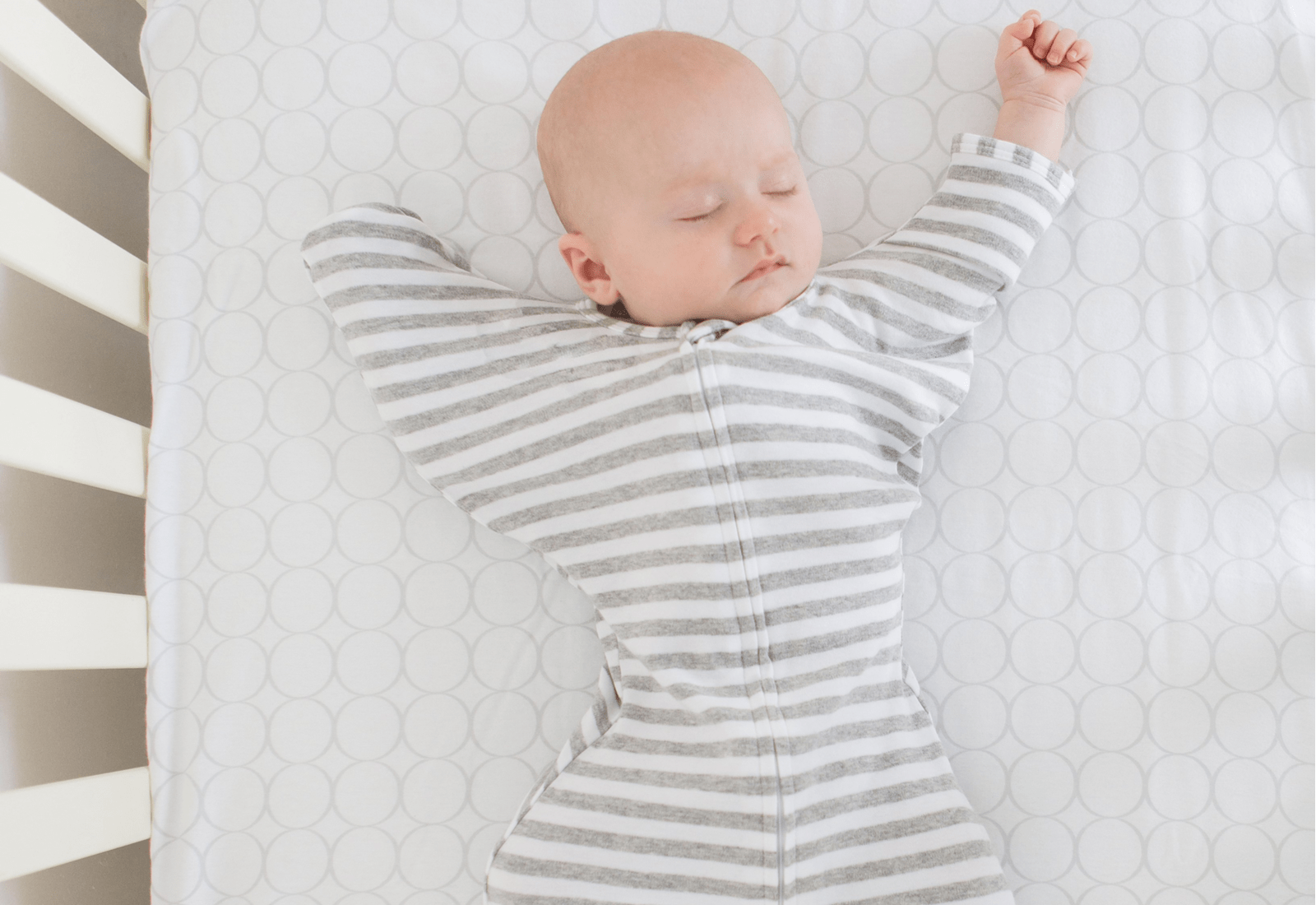When it comes to putting your bub to bed, the most important thing is baby sleep safety.
Every baby is different when it comes to their snoozing habits. Some sleep soundly until morning (those lucky parents), whereas some wake periodically throughout the night. However, what’s consistent for every baby is that there are some do’s and don’t when it comes to putting them down safely for the evening.
10 Steps for Baby Sleep Safety
- Put your baby on their back in the cot
- No smoking near, or in the same room as your baby
- Ensure nothing can cover your baby’s face
- Place your baby in the “feet to foot” position
- Keep your baby’s room temperature controlled – don’t let them get too hot or cold
- Sleep in the same room as your baby for the first 6-12 months
- Ensure your baby’s mattress is well fitted
- Remove all pillows, soft toys and other loose objects from your baby’s cot
- Avoid putting your baby to sleep on a couch
- Use a cot that meets Australian safety standards
Placing Your Baby on Their Back to Sleep
Sleeping on their back is the safest sleeping position for babies. As they get older and can roll over on their own, put them to sleep on their back but allow them to find their most comfortable sleeping position during the night.
Don't Let Anything Cover Your Baby's Face
It’s safest to ensure nothing will cover your baby’s face when they sleep because they can’t remove it themselves, which can be dangerous. If you use a blanket, ensure it’s tucked in securely so it won’t come loose. Instead of blankets, why not explore a baby sleeping bag? They have fitted arm and head holes, keeping your baby warm so you don’t have to worry about a blanket.
The "Feet to Foot" Position
One of the most memorable mantras of baby sleep safety, the “feet to foot” position involves placing your baby with their feet at the end of the cot, pram or bassinet. If you are using a blanket, tuck the covers in securely underneath your baby’s arms so it can’t slip over their heads as they sleep. Use lightweight blankets – don’t use things like duvet or quilts, wedges or bedding rolls.
Ensure Your Baby Isn't Too Hot or Too Cold
As a rule of thumb, use what you are wearing to bed as a guide for your baby. However, you should always ensure that your baby’s head is uncovered during the night so they can better regulate their body temperature.
Sleep In The Same Room
While your baby is very young, it’s important to sleep in the same room as them at night. While it may mean some less-than-fantastic night’s sleeps, it will ensure that you can keep an eye on them throughout the evening.
Ensure Your Baby's Mattress is Well Fitted
When it comes to your baby’s mattress, only use one that is specifically designed for your cot. If the mattress is ill-fitting, it could create gaps that could pose a danger to your baby. The mattress should be firm, and shouldn’t have an additional mattress placed on top.
Pillows, Toys and Loose Items
While you might enjoy the supreme comfort of a fluffy down pillow, your baby is a different story. Pillows, other loose items and even soft toys pose a risk to your baby, as during the night they may cover your baby’s face or cause them to overheat. Best to remove them before bedtime.
No Napping on the Couch
Everyone enjoys a nice cat nap on the couch every now and again, but for your baby, bedtime should be a cot-exclusive. Putting your baby to sleep on a couch can pose a risk as they may slip between cushions or pillows, or slip down so a blanket is covering their face.
Meet Australian Safety Standards
In Australia, we have impeccable safety standards on infant products to help keep your baby safe. When you are looking for a cot, they should have a clear label showing AS/NZS 2172:2003 or AS/NZS 2195:1999 for portable cots, which demonstrates that they meet these strict standards.
Where To Go for More Information
While having a new baby is a joyful time in your life, it can also be a little daunting. If you have further questions about things such as putting your baby to sleep safely, your local healthcare professional will be able to give you guidance. You may also find this online resource from the NSW Government helpful.
*This article has been written in alignment with safe sleep health campaigns. For more information visit https://www.health.nsw.gov.au/kidsfamilies/MCFhealth/Publications/safe-sleeping-for-your-baby.pdf
What's Next?
Looking for more information about newborns? If so, you may find these articles useful:
Breastfeeding Battles: Achieving a Successful Latch
Encouraging Healthy Sleeping Habits For Your Baby
How To Create A Child’s Bedtime Routine In 5 Simple Steps
Understanding Baby Sleep Cues: What They Are And How To Support Your Little One
